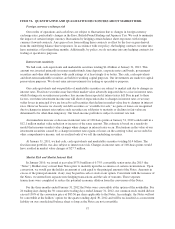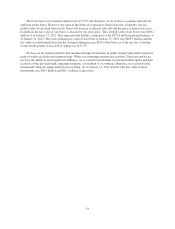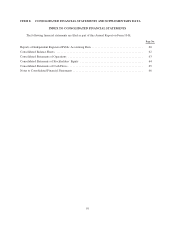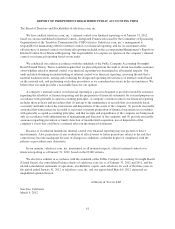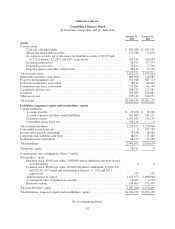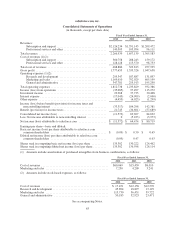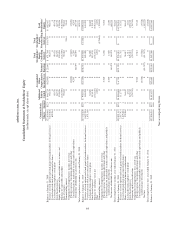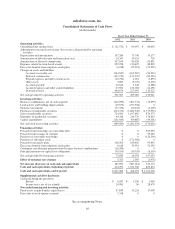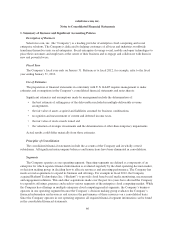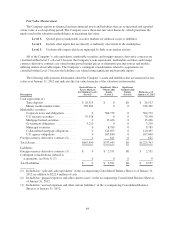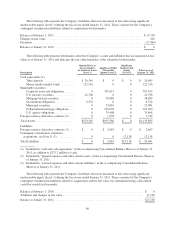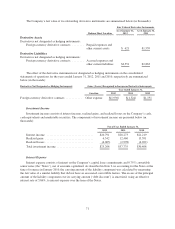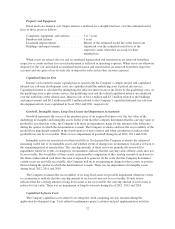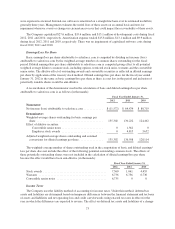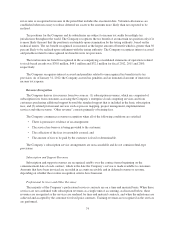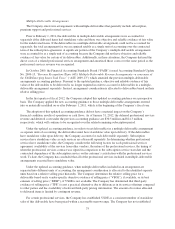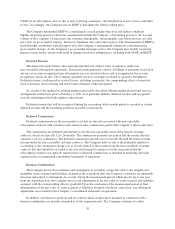Salesforce.com 2012 Annual Report Download - page 70
Download and view the complete annual report
Please find page 70 of the 2012 Salesforce.com annual report below. You can navigate through the pages in the report by either clicking on the pages listed below, or by using the keyword search tool below to find specific information within the annual report.salesforce.com, inc.
Notes to Consolidated Financial Statements
1. Summary of Business and Significant Accounting Policies
Description of Business
Salesforce.com, inc. (the “Company”) is a leading provider of enterprise cloud computing and social
enterprise solutions. The Company is dedicated to helping customers of all sizes and industries worldwide
transform themselves into social enterprises. Social enterprises leverage social, mobile and open technologies to
place their customers and employees at the center of their business and to engage and collaborate with them in
new and powerful ways.
Fiscal Year
The Company’s fiscal year ends on January 31. References to fiscal 2012, for example, refer to the fiscal
year ending January 31, 2012.
Use of Estimates
The preparation of financial statements in conformity with U.S. GAAP requires management to make
estimates and assumptions in the Company’s consolidated financial statements and notes thereto.
Significant estimates and assumptions made by management include the determination of:
• the best estimate of selling price of the deliverables included in multiple-deliverable revenue
arrangements,
• the fair value of assets acquired and liabilities assumed for business combinations,
• recognition and measurement of current and deferred income taxes,
• the fair value of stock awards issued and
• the valuation of strategic investments and the determination of other-than-temporary impairments.
Actual results could differ materially from those estimates.
Principles of Consolidation
The consolidated financial statements include the accounts of the Company and its wholly owned
subsidiaries. All significant intercompany balances and transactions have been eliminated in consolidation.
Segments
The Company operates as one operating segment. Operating segments are defined as components of an
enterprise for which separate financial information is evaluated regularly by the chief operating decision maker,
or decision making group, in deciding how to allocate resources and assessing performance. The Company has
made several acquisitions to expand its business and offerings. For example in fiscal 2012, the Company
acquired Radian6 Technologies Inc. (“Radian6”) to provide cloud based social media monitoring, measurement
and engagement solutions. This and other acquisitions made over the past two years have allowed the Company
to expand its offerings, presence and reach in various segments of the enterprise cloud computing market. While
the Company has offerings in multiple enterprise cloud computing market segments, the Company’s business
operates in one operating segment because the Company’s decision making group evaluates the Company’s
financial information and resources and assesses the performance of these resources on a consolidated basis.
Since the Company operates in one operating segment, all required financial segment information can be found
in the consolidated financial statements.
66



